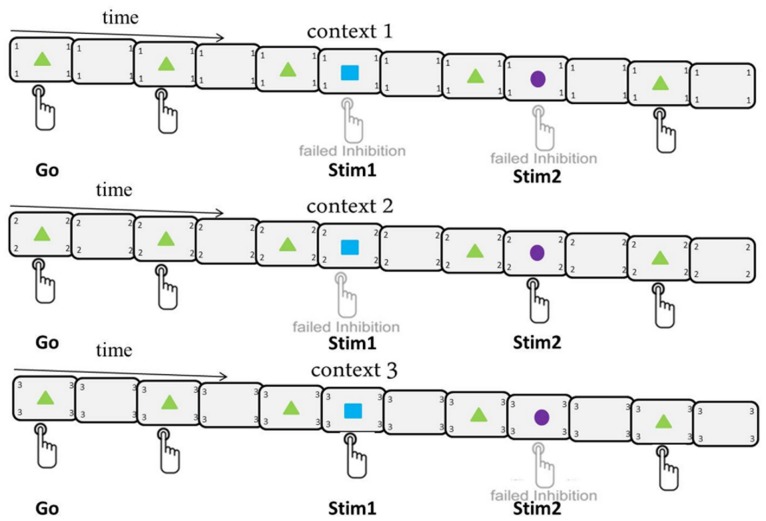Figure 1. Experimental design.
Depicted is the experimental design, outlining the three contexts and illustrating the response selection for the go signal (triangle) and two infrequently presented stimuli (square and circle). The current context is always presented in the four corners of the presentation screen. The presentation of Stim1 (13%) is more infrequent than the presentation of Stim2 (26%), whereas, the majority of trials are go-trials (61%). For context 1, a button press for Stim1 (blue square) and Stim2 (violet circle) is considered failed inhibition; whereas, a button press for either Stim1 (blue square) in context 2 or for Stim2 (violet circle) in context 3 is failed inhibition. That is, subjects are required to withhold their response to both Stim1 and Stim2 during context 1; however, in context 2 and context 3, stimulus-response mappings change such that the stopping demands are different (stop Stim1 in context 2 and Stim2 in context 3).

